You are probably familiar with the plethora of no-known-copyright photos that many museums and research units from across the Smithsonian post on the Smithsonian Flickr Commons. The Smithsonian has now been on the Commons for over four years, and we’ve enthusiastically taken in all of your comments, identifications of images, and favorites of our photos.
Here at the Archives, we both manage the Smithsonian Flickr Commons, and enjoy contributing our own collections to the Commons as well. Because of this, we eagerly drop in from time to time into our statistics to see what photos you’re enjoying on the Commons and what you have to say about these images.
Now that we’ve been on the Commons for over four years, it’s very interesting to see our most popular images of all time. So, without further ado, here are the ten most popular images on the Smithsonian Flickr Commons:
1. Uniformed Letter Carrier with Child in Mailbag
It’s a baby! In a mailbag! It’s no surprise that this toddler in a cute pose tops our list—everyone knows that babies are meme-makers. However, you might not know the story behind this photo. Though this particular image was simply a humorous posed image made for fun, indeed, after parcel post service was introduced in 1913 at least two children were sent by mail. Read more about the debacle in our blog post, How Many Stamps Does it Take to Mail a Baby?
Our second most popular photo continues the cute kid trend: a young boy does struggles to put his letters into a Doremus-style mailbox amidst a wintry background. All of our commenters agree that this is truly a Hallmark moment, and would make a great holiday card. Need some more holiday craft inspiration (even though it’s the summer)?: check out our Winter Wonderland set on the Flickr Commons.
3. Portrait of Albert Einstein and Others (1879-1955), Physicist
It’s no surprise that Albert Einstein (pictured with other important scientists of his time) tops our list—Einstein is without a doubt one of the most photograped scientists in history. Read more about why he is so etched in our visual consciousness in our blog post, The Camera Loved Einstein.
4. US Troops Surrounded by Holiday Mail During WWII
And the mail theme continues . . . This photo of US soldiers lierally overwhelmed by a tower of mail during WWII has piqued a lot of interest, and has also amused many with its juxtaposition of items: a hockey stick; a spare tire; and crushed boxes clearly marked "Fragile," and "GLASS—With Care.” Read more in our blog post, Soldiers and the Mail.
5. Mary Blade, standing at blackboard
Mary Blade is an impressive figure in science. In 1946, when this photograph was taken, Mary Blade was the only woman on the Cooper Union engineering faculty and one of few women on any engineering faculty in the United States. Add to that the visual aspects of this image—Blade’s charming smile and neatly-drawn curve graph—and it’s no wonder that this is a favorite. Check out more luminaries of science in our Women in Science set on the Flickr Commons.
6. Carte-de-visite of Henry M. Stanley
Everyone knows the line, “Dr. Livingstone, I presume?” which was supposedly uttered by Henry Stanley upon finding fellow explorer David Livingstone, who was presumed lost or dead, in Africa. Stanley was a popular writer and explorer during his day. This photo, which pictures Stanley with his adopted servant, Kalulu, has provoked heated discussions and debate about colonialism during the 19th century. Read more about the complicated relationship between the two in our blog post, Photos, Guns, Africa, Stanley, & Kalulu.
7. First Ladies Gowns, Jacqueline Kennedy
Who can resist Jackie O—the First Lady beloved by many, and known as a fashion plate to the world even today. This photo pictures the gown and cape worn by Jacqueline Kennedy at the Inaugural Ball for her husband, President John F. Kennedy. The outfit is now featured in one of the Smithsonian’s most popular exhibits, “The First Ladies” at the National Museum of American History. You can visit The First Ladies online exhibit here.
8. Portrait of Felix Nadar (1820-1910), Photographer and Aeronautical Scientist
The photo actually features Felix Nadar—one of the most famous photographers of the 19th century, but history of photography, steampunk, and balloon enthusiasts have all embraced this image. That needs little explanation—it’s simply fun to look at a top-hatted man seemingly floating above the earth in a hot air balloon. Nevertheless, read more about the career of this photographer in our blog post, Felix Nadar.
NASA's Chandra X-ray Observatory and the Hubble Space Telescope penetrates the dark columns of gas and dust to reveal how much star formation is happening there. The result is a gorgeous and almost-mystical looking image that also gives us a lot of scientific information: the Chandra data (red, green, and blue represent low, medium, and high-energy X-rays respectively) show very few X-ray sources in the so-called "Pillars of Creation" themselves. This indicates that star formation peaked in this region several million years ago. Check out more stunning images in the Chandra X-ray Observatory set on the Flickr Commons.
The Scopes “Monkey” Trial—known as the trial of the century—famously debated the teaching of evolution in school in the 1920s. In this trial, high school teacher John T. Scopes was accused of violating Tennessee's Butler Act, which made it unlawful to teach evolution in any state-funded school. Here, scientists who asked to testify in support of Scopes gather together for a picture. Read a whole series of blog posts on the Scopes Trial and view the Archives’ snapshots from the trial.
Want to keep up with the Smithsonian's new additions of photos to Flickr? Subscribe to the Smithsonian Flickr Commons feed.
Related Resources
Smithsonian on the Flickr Commons
Produced by the Smithsonian Institution Archives. For copyright questions, please see the Terms of Use.

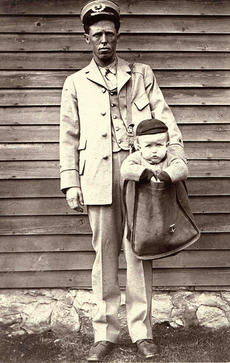
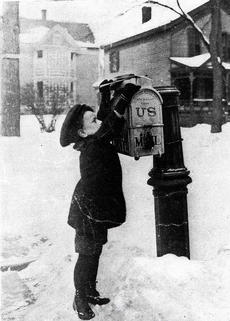
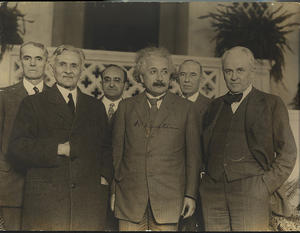


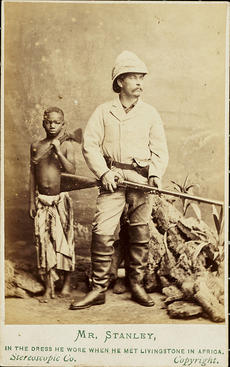
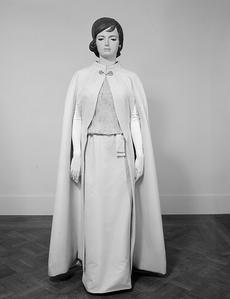
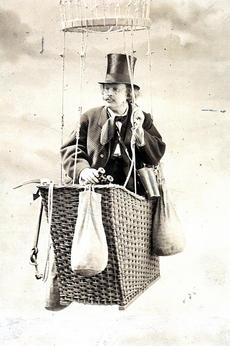
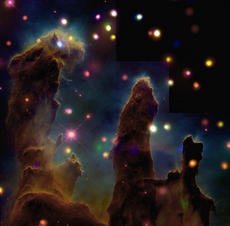
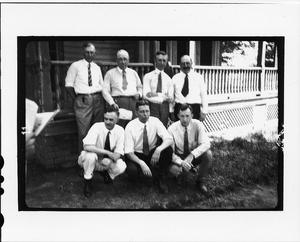
Leave a Comment